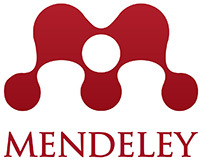Author Guidelines
Journal of Accounting, Management and Economics Research (JAMER) manuscript submission is through OJS (Open Journal System).
Furthermore, the results of the editors' and Bestari Partners' manuscript review (revisions, acceptance, or rejection) will inform via email, and the corrections are required resubmitted into the JAMER.
Guidelines for Authors / Online Manuscript Submission or as a Journal Reader:
- Visitors must have a "user name" by clicking "register" and creating a password before accessing the JAMER website and filling out the profile. You should 'Register' first before submitting the manuscript if you are an author. Are you already registered? Go to the login stage and begin the five-step script entry procedure.
- Starting a New Manuscript Submission
Click Here to start the five-step submission process.
Step 1. Starting Manuscript Submission
(1) Start; (2) Upload Submission; (3) Enter Metadata
(4) Upload Additional Files; (5) Confirm
- "Login" is required for 'Readers' who want a complete manuscript and download in PDF or writers who wish to submit a manuscript and check the status of the submitted manuscript until it is published, while information on the manuscript reviewed will notify via email;
- If you only want to search or view the journal's contents, both names and manuscripts that JAMER has published, please select the 'LOOK' menu.
Writers Guidelines
- The article should be within the scope and focus of this journal.
- The article is sent in Word format with the following conditions:
- A4 paper with the page margin; Left (2,5 cm), top (2,5 cm), Right (2,5 cm), and bottom (2,5 cm);
- Articles may be up to 12 pages in length, excluding indexing.
- Conjunctions in the title (and, in, or with, as well, about, that, against, so, because, then, for the sake) and prepositions (in, to, from, into, within, by, through) are written in
- Cite all relevant references.
- Do not include plagiarized obscene, libelous, or defamatory material.
- Please do not insert page numbers.
- Give credit to other people who have helped or influenced your work.
- Articles are written with the following regulations.
- TITLE (Garamond 14; contains uppercase on the whole and bold; 1 space).
- Author(s) Name (Garamond 12 and bold; 1 space).
- Author(s) Affiliation (Garamond 10; 1 space) contains the name of the institution/ organization/workplace/author’s works/study place.
- Correspondence (Calisto MT 8, 1 space) only contains the first author’s email address.
- Abstract (Calisto MT 10; contains uppercase in the first letter and bold; 1 space). The manuscript abstract is written in English and Bahasa Indonesia only. Abstracts are summaries/extracts of scientific articles (manuscripts) consisting of objectives, problem phenomena, data and methods, findings/results, conclusions, and managerial implications/contributions; 180-200 words.
- Keywords (Calisto MT 8; bold; italic) and their contents (Calisto MT 8) are written in English, with several 3-5 keywords.
- INTRODUCTION (Book Antiqua 12 and bold) and its contents (Book Antiqua 11; 1 space). The introduction explains three essential things in scientific articles: the phenomenon of problems, the rationality of research, and the existing business gap to justify why this research is critical for the economic and business fields. Explanations of general data, the data is increasingly conical to be more specific according to the topic of discussion. The introduction should rely on several vital references (around 5-6 recent related articles) to support the rationality of this research. The final part of the introduction includes the problem formulation, research gap, objectives, specific benefits of this study, and novelty (if any).
- LITERATURE AND HYPOTHESIS (if any) (Book Antiqua 12 and bold) and its contents (Book Antiqua 11; 1 space). This section discusses studies/reviews of journals, articles, books, and other relevant sources. Hypothesis formulation is presented in this section as an in-depth elaboration of the hypothesis argument used. The hypothesis developed must be based on standard theory and the results of previous research. It is recommended that each hypothesis be supported by at least four significant references that you use.
- METHODS (Book Antiqua 12 and bold) and its contents (Book Antiqua 11; 1 space). This section explains the data (population and sample) and the method of measuring research variables (variables description), so they can easily replicate. In the method section, generally, some models will be used to analyze the data obtained.
- RESULTS/FINDINGS (Book Antiqua 12 and bold) and its contents (Book Antiqua 11; 1 space). They presented data analysis from the initial data testing process and descriptive analysis of the results and findings resulting from an analysis of statistical and econometric models determined in the research method. The analysis process must be continuous, structured, and systematic so that the reader understands well after each step produces the findings, then discussed in statistics or econometrics first.
- DISCUSSION (Book Antiqua 12 and bold) and its contents (Book Antiqua 11; 1 space). Descriptions of the findings and discussion should be made separately. Discussion is a crucial part of a scientific article where an in-depth interpretation of the results or findings of a study. The discussion should involve a dynamic process and comparison with relevant previous studies based on specific scholarship. Discuss each finding carefully to produce representative conclusions and follow the study's objectives. This part should explore the significance of the results of the work, not repeat them. A combined Results and Discussion section is often appropriate. Avoid extensive citations and discussion of published literature.
- CONCLUSION (Book Antiqua 12 and bold) and its contents (Book Antiqua 11; 1 space). The conclusion summarizes the results of the discussion of the results and findings of the study. This section is the main idea of the scientific article (main idea) that is in line with the purposes of the article. Suggest the conclusion in 3-4 paragraphs of medium size, with the last paragraph is managerial implications.
- Recommendation (if any) Give advice or recommendations to parties who are relevant and related to this study. Suggestions should be specific, informative, and actionable (max 100 words).
- Limitations and Avenues for future research: Explain in one paragraph (max 70 words) the limitations of the article we compiled related to the purpose/problem, the data, and the method or design of the analysis. This article should also provide input for an avenue for future research.
- Competing interests. The authors must declare all relevant interests that might be seen as conflicting. Writers should explain why each conflicting interest exists. If there are no disputes, the writers should say this. The authors that submit the paper are responsible for coauthors reporting their conflicts of interest.
- REFERENCES (Book Antiqua 12 and bold) and its contents (Book Antiqua 10; 1 space). Sources of citations and bibliography must be the same. The writing format of a bibliography refers to the American Psychological Association (APA). In the last ten years, at least 25 scientific papers have been indexed by Sinta, DOAJ, EBSCO, Copernicus, Proquest, Scopus, and WOS. Citation and bibliography writing are advised to use the Mendeley application.
Table
Tables are numbered (1, 2, 3, etc.) in the main text, and each table has a short title put above it in bold that explains items' relevance in the main text.
Image
Whether diagrammatic or photographic, each illustration can be assigned a number and inserted in the image (1, 2, etc.). The image has a short title that illustrates content significance in the main text and is printed in italics at the bottom of the graph or image.
Submission Preparation Checklist
As part of the submission process, authors are required to check off their submission's compliance with all of the following items, and submissions may be returned to authors that do not adhere to these guidelines.
- The submission has not been previously published, nor is it before another journal for consideration (or an explanation has been provided in Comments to the Editor).
- The submission file is in OpenOffice, Microsoft Word, RTF, or WordPerfect document file format.
- Where available, URLs for the references have been provided.
- The text is single-spaced; uses a 12-point font; employs italics, rather than underlining (except with URL addresses); and all illustrations, figures, and tables are placed within the text at the appropriate points, rather than at the end.
- The text adheres to the stylistic and bibliographic requirements outlined in the Author Guidelines, which is found in About the Journal.
- If submitting to a peer-reviewed section of the journal, the instructions in Ensuring a Blind Review have been followed.








